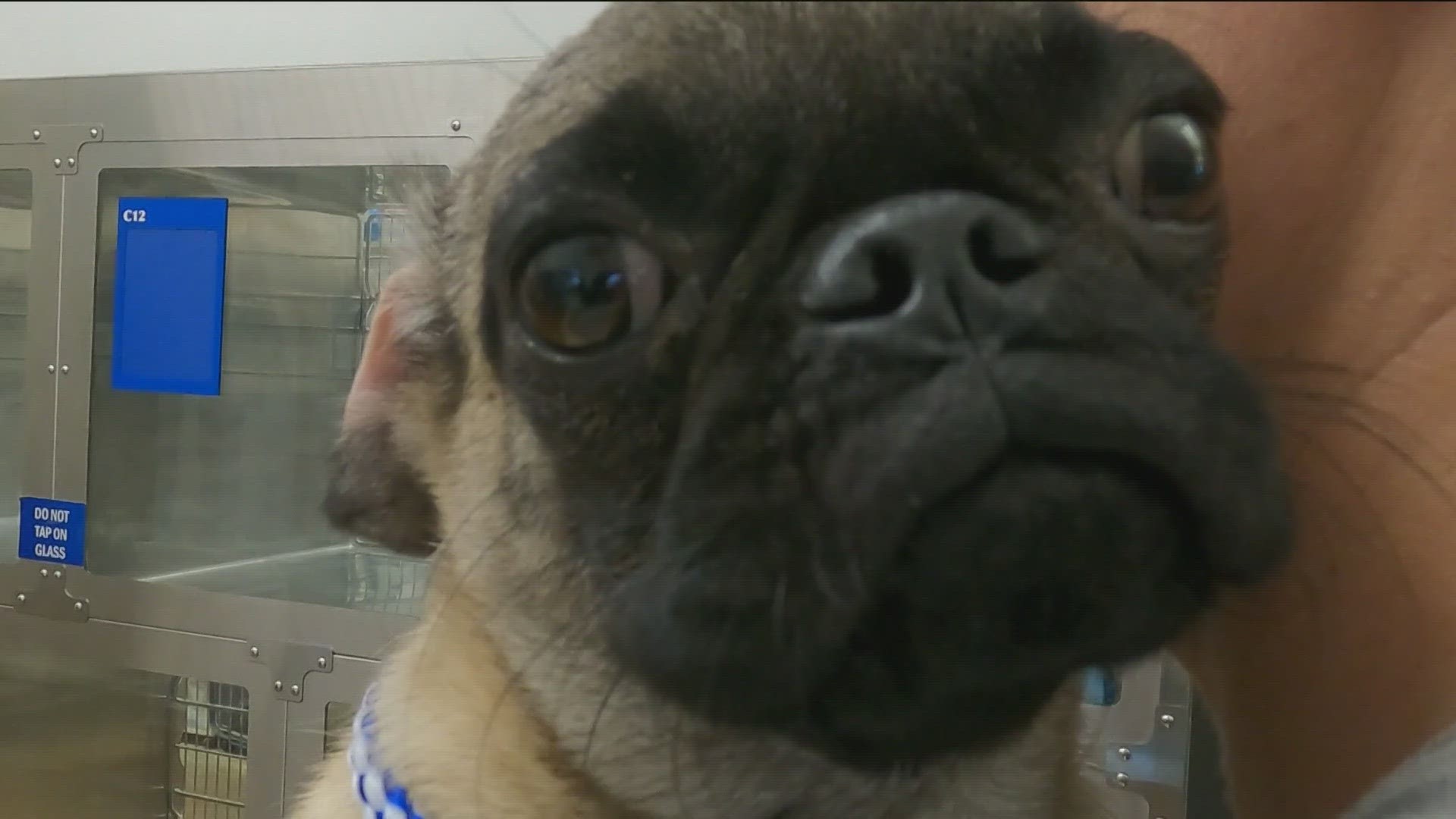AUSTIN, Texas — An audit of the office that oversees the Austin Animal Center (AAC) has revealed significant issues at the shelter, including dogs being kept in too-small cages, dirty conditions and strained relationships with stakeholders.
The audit, conducted by the City of Austin's Office of the City Auditor on the Animal Services Office, was directed by the city council via a resolution passed last summer.
The council directed the city auditor to perform an audit of the Animal Service Office's effectiveness and to hire an external animal shelter expert who was knowledgeable about "no kill" policies and practices to identify recommendations to improve the AAC's flow of operations and quality of care.
More recently, Austin City Councilmember Mackenzie Kelly (District 6) has also raised concerns about overcrowding at the AAC.
"Those conditions described are nothing less than abhorrent, sickening and entirely unacceptable. And, unfortunately, I have nothing kind to say right now," Kelly said.
The audit found that the "City's animal welfare priorities conflict with each other." The audit report states that under the current conditions, the AAC is not able to serve as an open-intake shelter while providing humane care for the animals in its possession and maintaining its goal live release rate.
"While AAC has consistently met and exceeded its goal live release rate for cats and dogs, these successes have come at the expense of animal care, and AAC has had to close its intake of new animals due to overcrowding," the audit report reads.
The report stated that the AAC doesn't have a strategic plan to balance the City's priorities, and the audit also found other issues, including data reliability, strained relationships with partners and issues with the shelter's physical conditions, including animal waste on the ground and algae in outdoor animal pools.
"Because we're overcapacity, we've had to resort to putting animals in pop-up crates," Assistant City Auditor Keith Salas said.
Salas also acknowledged the dirty conditions at the shelter and strained relationships with stakeholders.
"There's feces spread on the ground. When you have these clogged air vents that are clogged with fur ... whatever other waste, that can help spread disease," Salas said. "About a year ago, the Animal Advisory Commission passed a resolution where they said they did not have confidence in the management of the animal shelter."
Austin Animal Center's Kelsey Cler hopes the audit will generate conversations about what the future holds.
"We've been struggling for a very long time, for years at this point, in balancing being an open-intake shelter and hitting the 95% live release rate, as well as providing humane care for the animals," Cler said. "At this point, we need to change."
But Salas said building a bigger shelter would not solve all the problems.
"No matter how big it is, you're going to get to a point where you have more animals than you are able to care for. So what we really need is to understand, where are we going to draw lines like what tradeoffs are we willing to make?" Salas said.
To address the audit's findings, the Office of the City Auditor has issued six recommendations for the AAC:
- The City Manager should work with the city council, AAC and key stakeholders to establish a policy that balances the "no kill" goals, the community's intake needs and the humane treatment of animals. This policy should be adaptable to changing conditions and resources and should be clearly communicated to all stakeholders
- The Chief Animal Services Office should work with stakeholders to develop, implement and monitor a strategic plan that, at a minimum, should:
- Address how the shelter should balance its mission "to serve as a safety net" for lost and homeless animals while maintaining its live release goal
- Identify resources needed to achieve and sustain AAC's mission
- Be reviewed and approved by City leadership
- The Chief Animal Services Officer should:
- Establish, implement and monitor a sanitary plan for the shelter
- Develop, implement and monitor a process for cleaning all areas of the shelter
- Identify resources needed to address the structural issues noted in the audit report and address those issues if possible
- The Chief Animal Services Officer should ensure staff and volunteers are trained and monitored
- The City Manager should:
- Work with an independent third party to set up engagement sessions with key AAC stakeholders
- Implement an approach for building and maintaining trust across the AAC's internal and external stakeholders
- The Animal Services Officer should periodically verify data to ensure that it is accurate, complete and consistent across different systems
The City Manager appointed an outside consultant who will assess the audit, its findings and how the shelter will implement that. Cler said it will take about a year to get everything in place.

